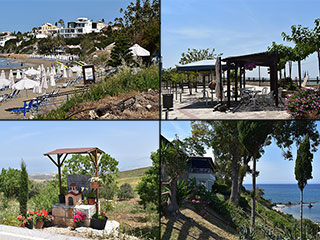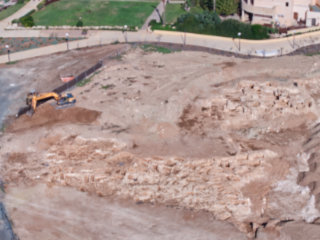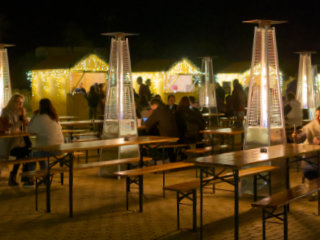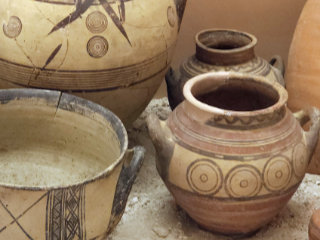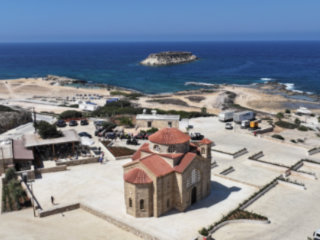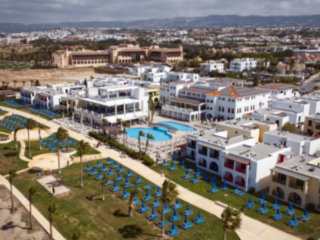The Ancient Sugar Factory At Kouklia
The Mill Stone Itself
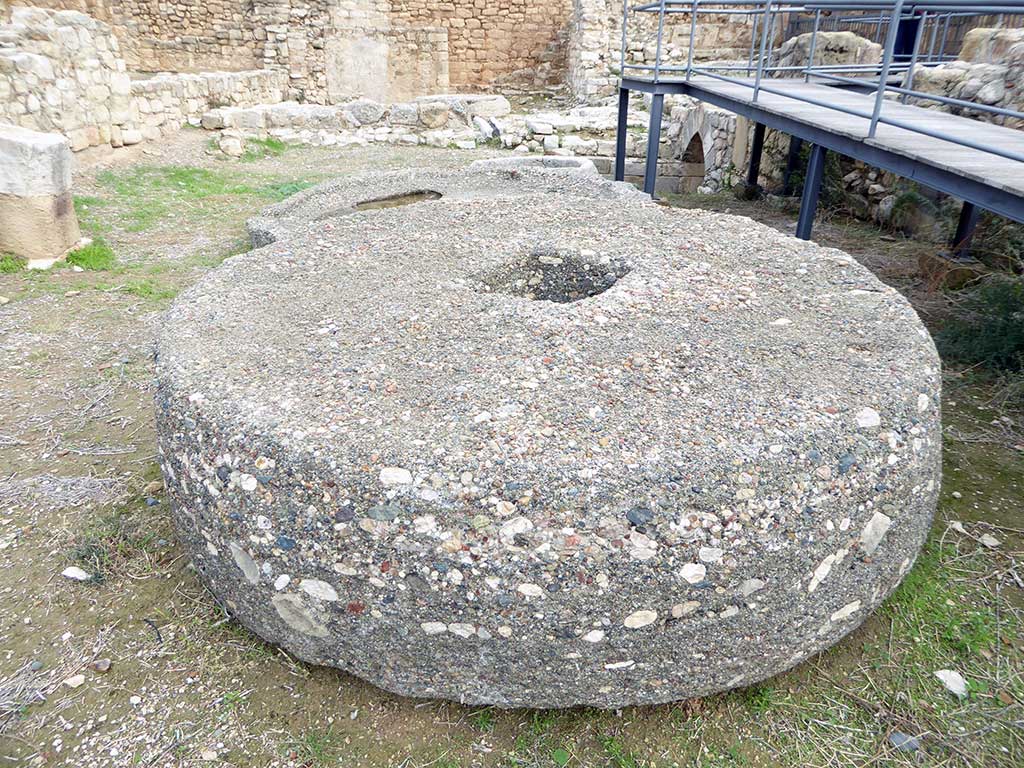
I am glad I didn't have to turn this! In another blog we will show you where millstones like this were carved out of the hillside.
Looking Towards The Boiling Hall
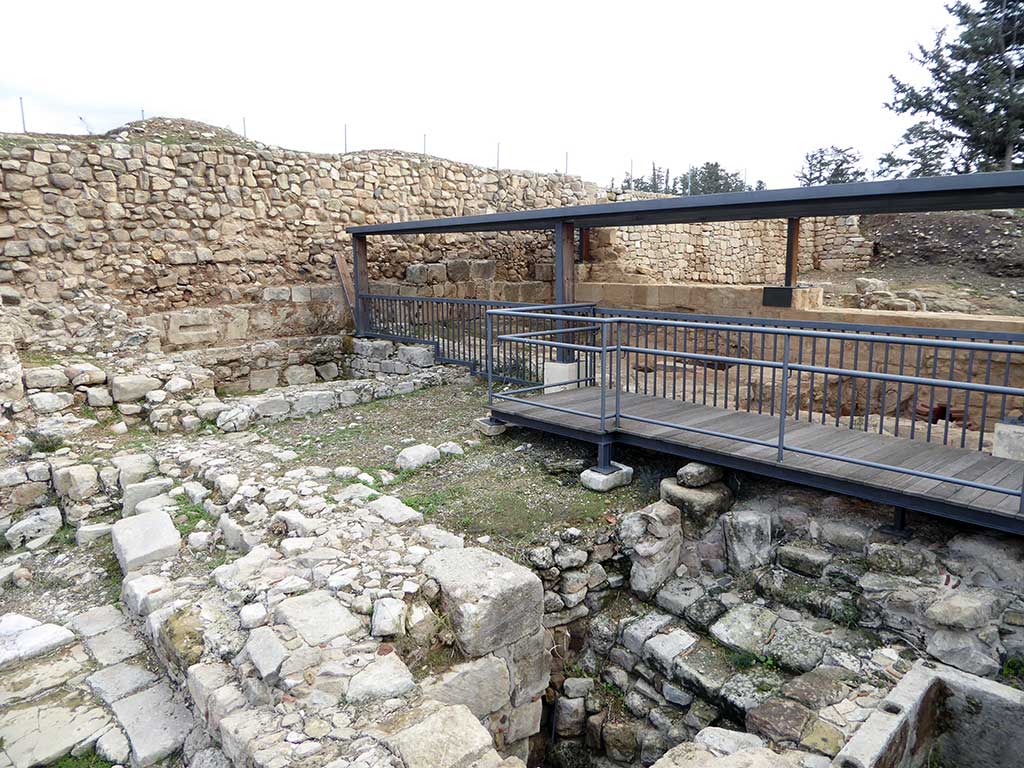
Whoever is looking after the site obviously wants to protect the area of the boiling hall and stone rooms, as they have been covered.
Part of the Boiling Hall
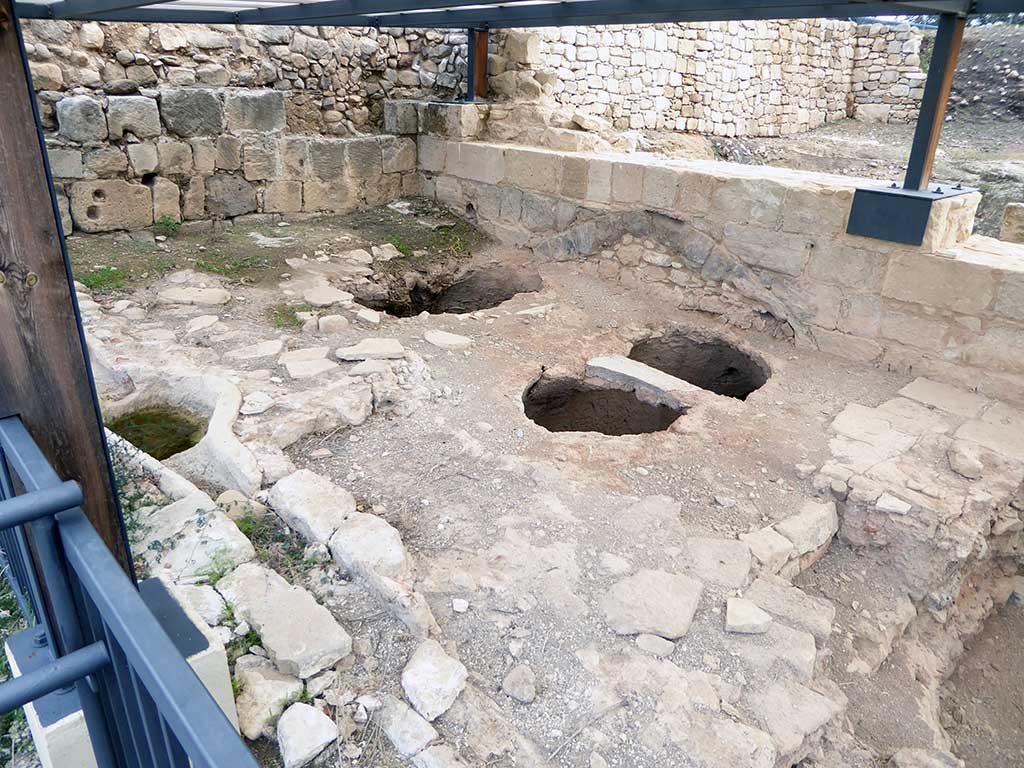
"One of the common misconceptions about medieval sugar is that it would have been laced with soot and ash. It is true that one of the largest problems when refining sugar, from a quality viewpoint, is how to handle the soot, ash and other byproducts from the fires necessary for the boiling process. The Cypriot mills responded to this challenge in their mill design. An analysis of the physical mills shows the stoke rooms separated from the boiling hall by a limestone wall. The stoke rooms were also deeper, partially under the boiling hall. These stoke rooms could be entered and exited through doorways leaving the facility. There was no direct access to the boiling hall from the stoke rooms, and vice versa. The question then arises, how was the juice boiled? The fires in the stoke rooms would heat the huge copper cauldrons in the boiling hall through the stone hearths upon which they were resting."
Signs of Renovation
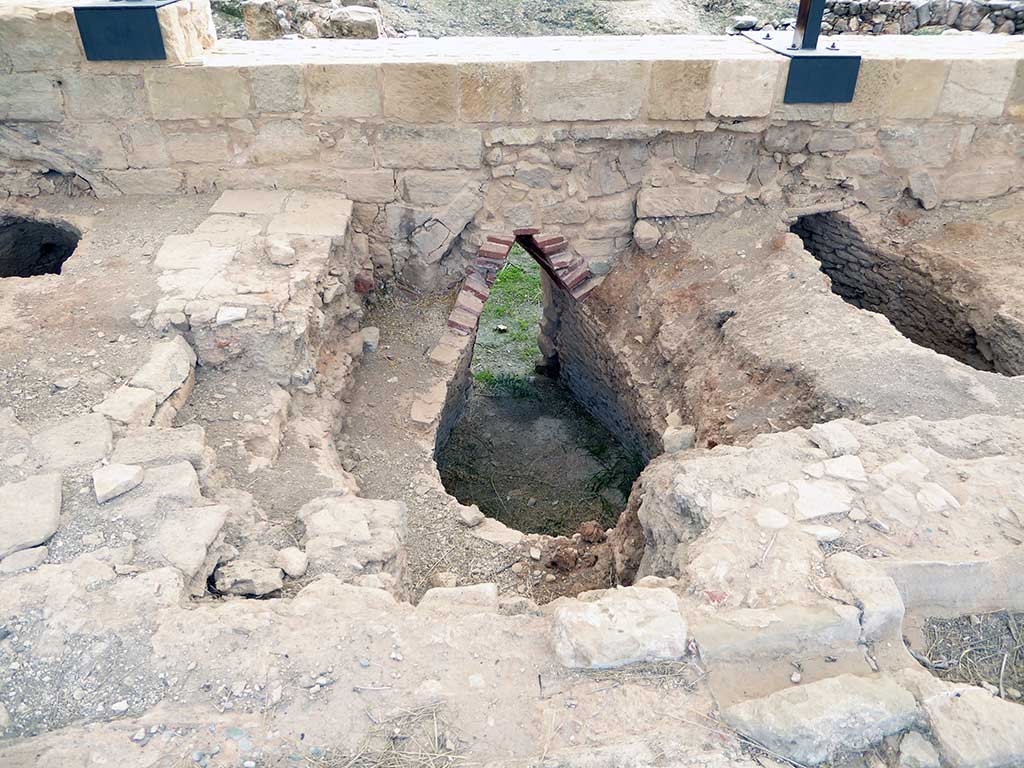
Somebody is obviously trying to restore this to it's former glory.
The Boiling Hall Again
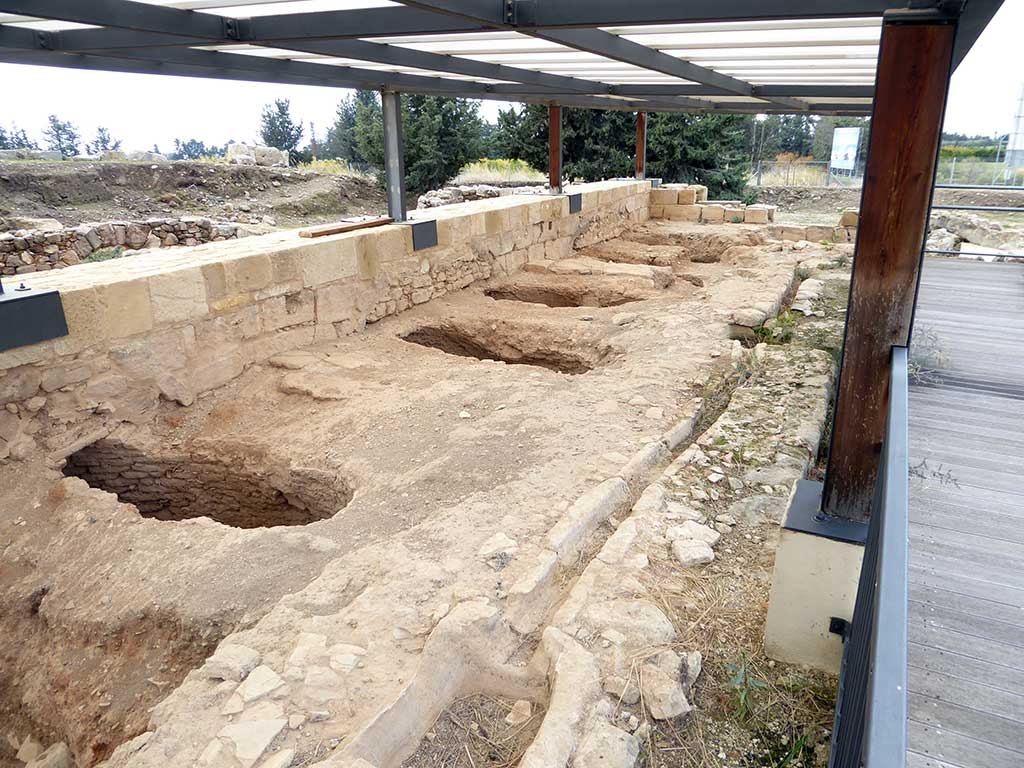
"Attached to the mill rooms by a series of stairs and cane juice reservoirs, the boiling hall housed the huge copper cauldrons that were used in the refining process. These cauldrons rested on special stone hearths of limestone, through which the fire from the stoke rooms would boil the cane juice. Careful and practiced control of the stoke room fires and the hearth-effect generated by the limestone design created the fairly consistent temperatures necessary for high quality sugar production."
Page 2 of 4


Related Blogs:
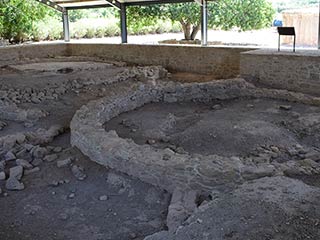
Kissonerga Mosfilia
Tucked away in the lower reaches of Kissonerga, lies a site of great historical importance. Similar in appearance to the ancient village of Lemba, which is currently closed for maintenance, Kissonerga Mosfilia is a perfect way to spend half an hour if you fancy something a little different. Like most of our findings, it was a happy accident that brought us to this ancient settlement. We were avoiding a roadblock and happened to pass this sign on our way to the coast road. Brown signs often signal something interesting, so we stopped to take a look...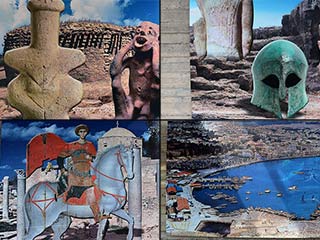
The History of Paphos in 16 Pictures
When I was out photographing a new statue in Old Paphos the other week, I stumbled upon a walkway I hadn't seen before. It descended to the lower carpark, by the Turkish Baths. The walkway was adorned with pictures telling the story of Paphos through the ages. Judging by the state of some of the pictures. they had obviously been there for some time, but this was the first I had seen of them. Here they are for your perusal...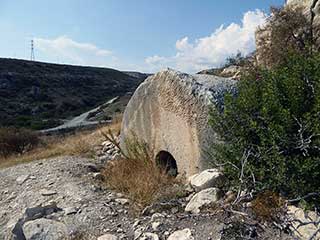
Ancient Millstones
In a recent blog we showed you the sugar factory at Kouklia. We mentioned at the time that we would do another blog showing where the mills might have originated from. I would imagine that the millstone in this blog was probably destined for somewhere nearer than Kouklia, as it would be a fair haul from Episkopi. However, you can at least see how the millstones were made.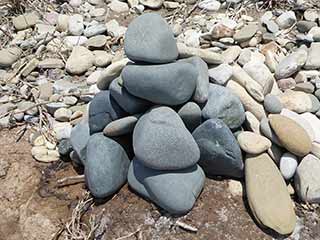
Mandria Mysteries
Today's blog is about a funny little place we found a few years ago while geocaching. It is also about some other relics we discovered while researching for this article. Together they demonstrate that you don't have to travel far from Paphos in order to find adventure. There are a number of mysteries here: What is the ancient monument? Why are the pill boxes so close together? Whatever happened to the Michalis Party Tavern? For more questions than answers, read on...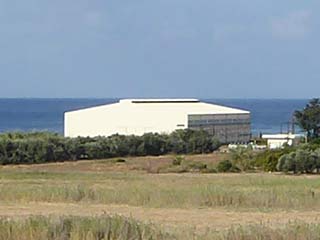
Paphos Desalination Plant
We were exploring the countryside around Mandria recently, and blogged about the Olive Factory we found there. At the same time, we noticed a rather large white building nearby. When we found out it was the old abandoned desalination plant, we had to investigate...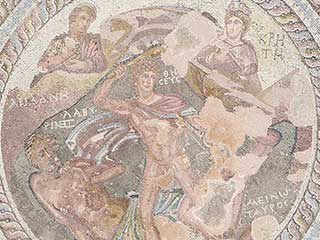
Paphos Archaeological Park
When relatives visited us a few weeks ago, we took them to some of the local tourist must-see sites. A definite highpoint was the visit to the Archaeological Park. We were especially lucky because it was spring time and all the wild flowers were in bloom...Good Pages To Visit
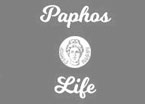
FB PagePaphos Life on Facebook
Like us on Facebook and stay notified of new blog posts.

FB PageOur Facebook Chat Group
Paphos Chat has been created for people who like our site and want to chat using Facebook. You can also easily upload photos of any size here. A lot of people are members of the Facebook chat group and the main forum. It's entirely up to you.
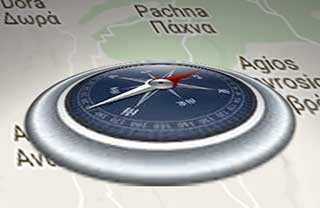
ListBlog Locations
Planning a day out? Then use our map of blog locations as a handy guide. Some of the places we visit our closer to each other than you might think, so take a look and start planning your next adventure...
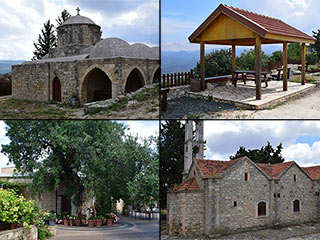
eBookCyprus Road Trip 01: the Kathikas - Panagia Loop
Let me take you on a journey around the region of Paphos, Cyprus. Starting at Paphos itself, we travel to Akoursos, then Kathikas, Kritou Terra and Simou. We continue past Lasa and Kannaviou, before taking in the delights of Panagia. Getting a bit more adventurous, we visit the abandoned villages of Statos and Agios Fotios, before passing through Choulou, Letymbou and Polemi, and rejoining the main Paphos - Polis road.
The route is suitable for all types of vehicle, and requires no off-roading. The guide contains about 130 photographs including shots of all the road signs you need to pay attention to, as well as some of the highlights you may experience along the way.
There are also several maps which will help you keep your bearings.
You can do this journey in a day, or you can break it up into chunks. You can also do it in reverse, to get some completely different views. It is entirely up to you.
